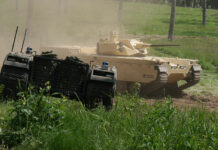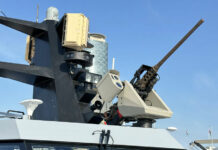On his way to his summit meeting between Iraqi PM Nouri Maliki and King Abdallah II in Amman, last week, President Bush declined to classify the Iraq crisis as a civil war and blamed Al Qaeda for the deterioration. The following day, US media reported a virtual bombshell, aired by ABC News that Pentagon officials are considering a major strategic shift in Iraq, to move U.S. forces out of the dangerous Sunni-dominated al-Anbar province and join the fight to secure Baghdad.
The Al Anbar province in western Iraq is a vast, sparsely populated area that stretches from the Euphrates River Valley to the Syrian border. Agriculture is the number one economy, and water is the most important resource. It’s 30,000 square miles of desert, dotted by farmland, with numerous small cities and towns, some of them 3000 years old.
US analysts and Israeli military sources immediately interpreted this step as more than acceptance for the first time of an American military defeat in the embattled province; it also paves the way for the creation of an Al Qaeda terrorist -Sunni insurgent base in western Iraq, a direct menace to neighboring Jordan and Israel, as well as Lebanon, which is already in dangerous turmoil. Although the US president stressed Al Qaeda would not be allowed to maintain a territorial haven in Iraq- analysts consider his plan as totally irrelevant to what is actually going on in that region. If Bush’s plan appears to be to hand Anbar over to the indigenous Sunni tribal confederation which will fight Al Qaeda- intelligence experts regard this as dangerously “wishful thinking”.
Recent developments in Western Iraq which engulfs over 1.25 million, mostly Sunni population, concentrated in Fallujah, Haditha, Hit, al Qaim and Ramadi area named Al Anbar province have indicated, that the U.S. military is no longer able to defeat the growing power of Al Qaeda led insurgency in this highly strategic area. A major operational transit area for ” outside” insurgents infiltrating from Syria along the Euphrates River valley, into the interior of Iraq, the small town of Hi’t has become a critical focal point for intensive fighting between insurgents and US forces.
In recent months, Al Qaeda’s propularity has been rising dramatically among the Sunni majority of the region and has virtually become the organisation’s “safe haven” in Iraq. According to a classified US Marine Corps intelligence report, leaked surprisingly to a US newspaper the author of this document, Colonel Peter Devlin, who was attached to the Marine Expeditionary Force in Anbar, described Iraq’s Sunni minority as “embroiled in a daily fight for survival, fearful of pogroms by the Shiite majority” and becoming increasingly dependent on Al Qaeda as its only hope against growing Iranian Shiite dominance of Baghdad. Colonel Devlin claimed that Al Qaeda has already become the dominant organization of influence in Anbar Province, surpassing all other groups, including the central Baghdad government and US troops in the region.
To emphasize the seriouseness of the situation, that the US Army is finding itself in Western Iraq these days it suffizes to pint out that between Al-Qaeda’s violence, Iran’s influence and an expected U.S. drawdown, “the social and political situation has deteriorated to a point” that U.S. and Iraqi troops “are no longer capable of militarily defeating the insurgency in al-Anbar,” the assessments stated. In Anbar province alone, at least 90 U.S. troops have died due to insurgency attacks since Sept. 1. Indeed, classified US intelligence estimates that between 600 and 700 Al Qaeda fighters are already permantly present in Iraq. This figure does not count the 600 to 800 Ansar al Islam fighters and smaller groups of locals and foreigners linked to Al Qaeda or identifying with its aims. All in all, Al Qaeda can field 1,800-2,000 fighters, which could swell into many thousands once Al Qaeda takes over the region entirely.
But matters can become much worse, once US forces are withdrawn out of this volatile region. An American withdrawal from Anbar will lay one-third of Iraq’s area bare to Al Qaeda and Sunni insurgent control. Once US troops are gone, no one can guarantee who will end up on top.
Strangely enough, the Pentagon only last year had authorized substantial funding to pull back their troops from Iraq’s towns and cities and redeploy them in four giant bases in Western Iraq, a strategy they said would be a planned prelude to eventual withdrawal. A dangerous move by Al Qaeda, following the planned withdrawal, could be to cripple the strategic airbases around the western city of Al Rutbah near the border with Jordan and put out of commission squadrons deployed at the H2 airbase and at the three airfields and landing pads at H3 along Iraq’s border with Syria and Jordan. This theater of operation also includes the problematic Al Qaim region, where weapons that include surface-to-air missiles are still being smuggled in from Syria more than three years after the US-led invasion. It also covers the meeting-point of the Iraqi, Jordanian and Saudi frontiers.
















